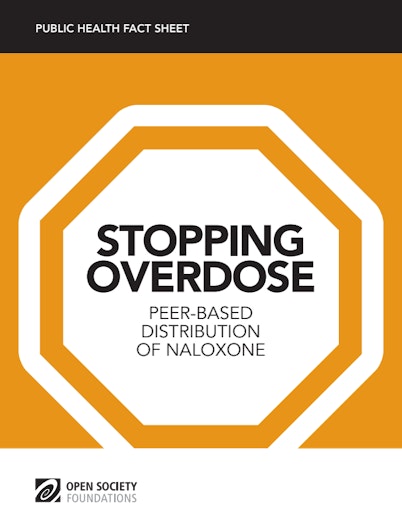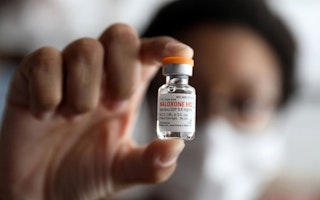Cheap, Easy, and Lifesaving—Naloxone Treatment for Overdose
By Daniel Wolfe
How much does it cost to save a life? That question got a clear and striking answer this week in the case of overdose from heroin in the United States. A study published in the Annals of Internal Medicine found that distribution of the overdose antidote naloxone—a safe, non-abusable, and inexpensive medicine—to one in five heroin users in the United States could prevent as many as 43,000 deaths. The cost of distribution would be equivalent to some of the cheapest, most effective, and most accepted medical interventions, like checking blood pressure at a doctor’s office.
The study used mathematical modeling to assess whether giving out naloxone was “worth it”—that is, to determine how much naloxone distribution would cost per “quality-adjusted” year of life gained. This is the measure used by economists and policymakers to compare health interventions and decide which ones are affordable. The naloxone study also investigated assumptions that patient advocates would rather not acknowledge—like whether it would be cheaper to let illegal drug users die, or to put them in jail. Those are ugly questions, but ones that certainly run through the minds of opponents of health services for drug users worldwide. The answer was that naloxone saves lives with costs far below what health or prison systems pay. For example, screening for cancer with colonoscopy costs over $50,000 per quality adjusted life year gained in the United States, and screening for HIV costs around $40,000.
Naloxone distribution saves lives for as little as $400.
The other question, of course, is whose lives are deemed worth saving. Drug overdose now kills more adults a year in the United States than motor vehicle accidents, or deaths from choking or accidental falls. Most of us have seen safety messages related to driving, choking, or minding our step, but naloxone and other measures to prevent overdose remain unknown to many at risk. As noted in an editorial in the same journal, co-authored by officials from the National Institute on Drug Abuse and the FDA, making new and easy-to-use formulations of the medicine can help. However, action can be taken now to make the medicine available to heroin users—actions that will prevent thousands of needless deaths, and spare family and friends who may have to watch helplessly as their loved ones stop breathing.

Until December 2021, Daniel Wolfe was director of the International Harm Reduction Development Program at the Open Society Foundations.


